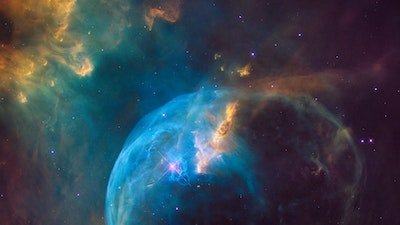
Strelley Pool Stromatolites Strike Another Blow for Early Life
Strelley Pool stromatolites strike another blow for early life.
News Source
- ars technica: “3.5 Billion Year Old Organic Deposits Show Signs of Life”
Western Australia’s Strelley Pool Formation is thought by many to harbor earth’s oldest microfossils. Sandwiched in between volcanic rock, they are conventionally dated with their Archaean host rock at about 3.45 billion years old. Not everyone agrees that the Strelley Pool structures are truly biological in origin. However, a study recently published in the Proceedings of the National Academy of Sciences adds to the evidence that the Strelley Pool stromatolites are truly biological.
While many evolutionists searching for the chemical origin of life believe Strelley Pool’s stromatolites are “the oldest evidence for life on earth,”1 some dispute the finding. Those who doubt their biological origin consider the timespan between the asteroid that supposedly struck the earth and burned away all its oxygen 3.85 billion years ago and this claimed evidence for life only 400 million years later to be much too short to be believed.
Stromatolites are finely layered dome-shaped structures found in sedimentary rocks. Those of biologic origin are created by mats of microorganisms (including some sulfur-eating bacteria) as well as the minerals they precipitate and the grit which they bind together and thus have entombed themselves. Living things that process sulfur preferentially incorporate lighter-weight isotopes of sulfur, but some non-biologic processes incorporate lighter isotopes too.
In order to determine the precise distribution of sulfur isotopes in the Strelley Pool stromatolites, the authors first sliced the stromatolites into extremely thin layers. They found that the stromatolites had preferentially incorporated lower weight isotopes in a non-uniform way, consistent with biological origins.2 (Non-biological processes that concentrate lower molecular weight isotopes do so more uniformly.) They not only indicate this finding confirms the stromatolites are genuine fossils but that their sulfur content is consistent with the evolutionary contention that the Archaean atmosphere was sulfurous, allowing life to evolve in an oxygen-free world.
Since stromatolites survive quite nicely in our oxygenated world today, their presence in some of the lowest rock layers is not evidence that the world then had a non-oxygen atmosphere.
The living stromatolites of today (found in many places, but particularly in Western Australia and the Bahamas) appear to be very similar to fossil stromatolites. Since they survive quite nicely in our oxygenated world today, their presence in some of the lowest rock layers is not evidence that the world then had a non-oxygen atmosphere. The notion of an anoxic early earth does not survive careful geologic scrutiny but is needed by evolutionists to explain how evolving biological systems could avoid being oxidized. We know from biblical history that God created an oxygen-rich atmosphere during Creation week, about 6,000 years ago, to support the life He created the same week.
The Archean rock layers are believed by many creationist geologists to have been formed early in the Creation week. God populated the early earth with these tiny mineral processors at about the same time as He created the plants. And while larger organisms such as those found in higher rock layers needed to be buried rapidly and catastrophically to fossilize, mostly during the global Flood, microorganisms are a different story. In the relatively stable environment of the pre-Flood world, their tiny forms would have easily been buried and preserved, even just by their mineral-processing activities, leaving these tiny rocky remnants from that time.
A biological origin for the stromatolite structures in these Archean rock layers is thus consistent with a biblical understanding of earth’s history. The long ages attributed to them and their host rock, however, are based on the unverifiable uniformitarian assumptions used to interpret radiometric measurements. And the biological origin of the Strelley Pool stromatolites does not support the idea that life evolved from chemicals and does not prove that billions of years elapsed on earth with or without oxygen.
Further Reading
- Sulphuric Fossils Give Insight On Ancient Earth
- Not-So-Ancient Algae
- Radiometric Dating: Back to Basics
- Radiometric Dating: Problems with the Assumptions
- Radiometric Dating: Making Sense of the Patterns
For More Information: Get Answers
Remember, if you see a news story that might merit some attention, let us know about it! (Note: if the story originates from the Associated Press, FOX News, MSNBC, the New York Times, or another major national media outlet, we will most likely have already heard about it.) And thanks to all of our readers who have submitted great news tips to us. If you didn’t catch all the latest News to Know, why not take a look to see what you’ve missed?
(Please note that links will take you directly to the source. Answers in Genesis is not responsible for content on the websites to which we refer. For more information, please see our Privacy Policy.)
Footnotes
- T. Bontognali, et al., “Sulfur isotopes of organic matter preserved in 3.45-billion-year-old stromatolites reveal microbial metabolism,” PNAS 109 no. 38 (September 18, 2012): 15146–15151 doi: 10.1073/pnas.1207491109
- This is not the only data that suggests a biological origin for the Strelley Pool stromatolites, as we have previously discussed in “Sulphuric Fossils Give Insight On Ancient Earth.”
Recommended Resources

Answers in Genesis is an apologetics ministry, dedicated to helping Christians defend their faith and proclaim the good news of Jesus Christ.
- Customer Service 800.778.3390
- Available Monday–Friday | 9 AM–5 PM ET
- © 2025 Answers in Genesis





